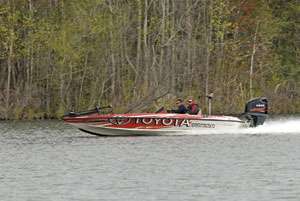
Washington, D.C. — Despite broad-based opposition that included sportsmen, environmentalists and industry, the Obama administration has approved production and sale of gasoline with up to 15 percent ethanol for 2007 and newer motor vehicles.
Until the Oct. 13 announcement by the U.S. Environmental Protection Agency (EPA), the maximum allowed had been 10 percent. “Thorough testing has now shown that E15 does not harm emissions control equipment in newer cars and lights trucks,” said EPA Administrator Lisa Jackson.
“Wherever sound science and the law support steps to allow more home-grown fuels in America’s vehicles, this administration takes those steps.” But just because the fuel is “home-grown” does not mean that it’s a wise move, insist critics who include the National Marine Manufacturers Association, Friends of the Earth and the National Petrochemical and Refiners Association, among others.
“We are extremely disappointed that EPA is allowing this fuel to enter the market without the appropriate scientific data or consumer and environmental safeguards,” said NMMA President Thom Dammrich. “This decision not only adversely impacts marine manufacturers, but creates a significant risk of misfueling for the nation’s 66 million boaters who will be left holding the bag for performance issues and expensive repairs.
We are astonished that EPA has decided to move forward with a fuel that will increase pollution and damage hundreds of millions of existing products.” Margaret Podlich of BoatU.S. echoed Dammrich’s concerns, adding that the newest marine engines are warranted up to only 10 percent ethanol. “Many boaters already are working hard to keep ethanol out of their engines,” she said. “They’ll have to work even harder now.”
For older marine engines, as well as lawnmowers and other products that burn gasoline, the problem with ethanol is that it is a potent solvent. Along with destroying rubber and plastic parts, it dissolves gunk from tank walls, which then blocks fuel lines.
Of course, anglers and other boaters will not be required to run their engines with E15, just as they were not with E10. But adding another option at the pumps creates complications that the EPA has not addressed. “We understand that E10 is in about 75 percent of gasoline now,” Podlich said. “There are some areas where boaters can find ethanol-free and others where they can’t.”
Now availability almost certainly will become more limited, as gas stations are not likely to add more storage tanks and pumps. Instead, they’ll eliminate one option — possibly ethanol-free or low octane E10 — so that they can offer E15. “And either from ignorance or from not paying attention, people will be more likely to use the wrong fuel,” Podlich explained.
“That’s a huge issue.” In addition to the damage that it can do to older engines, ethanol is a less efficient fuel than petroleum, according to opponents who point out that its production is water intensive and harms the environment.

